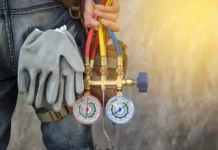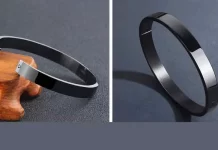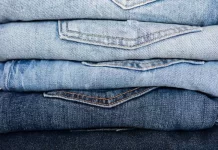A simple watch can contain up to 100 different components, while those luxury wristwatches can have over 1000 functional components that you would overlook. At least, you still know of the crown that helps you adjust the settings of the quartz. Is that all about the crown? No, not at all. It has some distinct functions that are relevant to wristwatch experts.
Even though you can call the transparent glass at the face of the wrist a “screen,” knowing the proper terms to use in describing parts of a wristwatch would help you sound knowledgeable. It’s the little things that you should know about, even if it’s the essential parts. Below are the five most fundamental aspects of a watch everyone should know.
- Case
The case is the protective house of the watch. It prevents the wristwatch from highly harsh conditions when it is not on your wrist. It is made of plastic, ceramic, or metal and outstanding watches from big brands often use gold, silver, platinum, or rhodium. For example, Bulova watches might have a stainless steel case, but a sports watch from Apple might be made with a different material.
Like the human skin, the case performs a function to subdue all factors that will cause adverse effects on the wristwatch. It doesn’t have to be cleaned daily, but when you are not ready to use the wristwatch, clean it and place It carefully inside a safe storage box. With a strong case, you can use your wristwatch for a long time. Do you know how delicate our wristwatch watch case can be? The case has to be thick, portable, easy to open and close.
- Dial
The dial is the part that is responsible for showing the time. The hand points to the dial in a digital clock before you do your calculation, unlike the numeric digital display wristwatch. It gives you the chance to differentiate 10 minutes from 11 minutes and noon. However, slight miscalculation might occur when the hands point to the dial arranged around it.
Without the dial, there is no way to measure the accuracy of the wrist wristwatch, one of the essential features. Using a wristwatch without a dial is like calling an unknown number. The way the dial is being arranged in a wrist wristwatch is different in terms of brand.
Which will you go for then? A casual wrist wristwatch all number dials written directly without too much design but easily accessible, or a formal wristwatch that the number dials represented with either a dash or a line – except from the essential time identifiers like “12” “3” “6” “9” but might not be easily calculated.
- Hand
We refer to this as the “pointer,” and it moves over the dial itself. The hand points at the hour mark to indicate the time. It can be made of plastic, metal, or some precious stone like gold and silver. It shows the time out, and we can say it is the most important feature if we are leaving out some other essential parts.
Most brands get it planted black or brown, so it is easy to figure out. The hand has a pointed mouth that prevents it from mistaking the position on the dial. It is connected to the crown directly and is the powerhouse behind the settings of the wristwatch.
It is like a traffic sign where you need all the signals before moving an inch on the road. The hand also is kind of similar to traffic signs showing you which way to go. A good dial shows the accuracy of the time and makes you familiar with it.
Yet, you should know that it still has some defect that is not that serious and it comes up during seasons. They become faster than usual during summer and hot days because of a little bit of expansion. So it escapes easily and quickly hits the next dial. Meanwhile, winter is different because it tends to slow the reading of time due to a bit of contraction. Hence, the hand goes slow to hit the next dial.
- Crown
The crown is the “little knob on the side of the watch” used to set time. Whenever the hand has a minor defect, then the crown comes into place. Just by turning it in, you will set in the time, and it takes automatic action from there.
As mentioned above, crowns do not just do this. They are known for making adjustments throughout the wristwatch. Even as a wristwatch expert, you can quickly turn that little knob on the side of the wristwatch and keep an eye on the wristwatch until you get the accurate time right. Isn’t that so easy for anyone?
The crown can be made in any way, shape, or form before the brand. Some brands also make use of circular crowns. Other brands might make use of star-shaped crowns.
- Crystal
This is the transparent glass or synthetic sapphire-made feature that protects the dial, hands, and all the interior characteristics. The crystal protects the wristwatch after the case.
You can see through it. However, you can’t touch the dial and the internal features of the watch. Just like a standard glasshouse at which you easily see what is happening inside.
Conclusion
Apart from all these five essential parts, you will also find many crucial features in a wristwatch. Some of the other parts are the bezel, hour marker, lugs, pusher, subdial, and many more. Don’t just buy a wristwatch. Show that you know the value of wristwatch features from knowing all the essential elements and parts so well. Another point you should note is that these parts can be delicate and easy to replace. Wristwatch owners can change or replace parts of their wristwatch, but this is discouraged as it can lead to permanent damage. If you notice any faulty parts, the best thing to do is to take your wristwatch to an expert to be checked.























